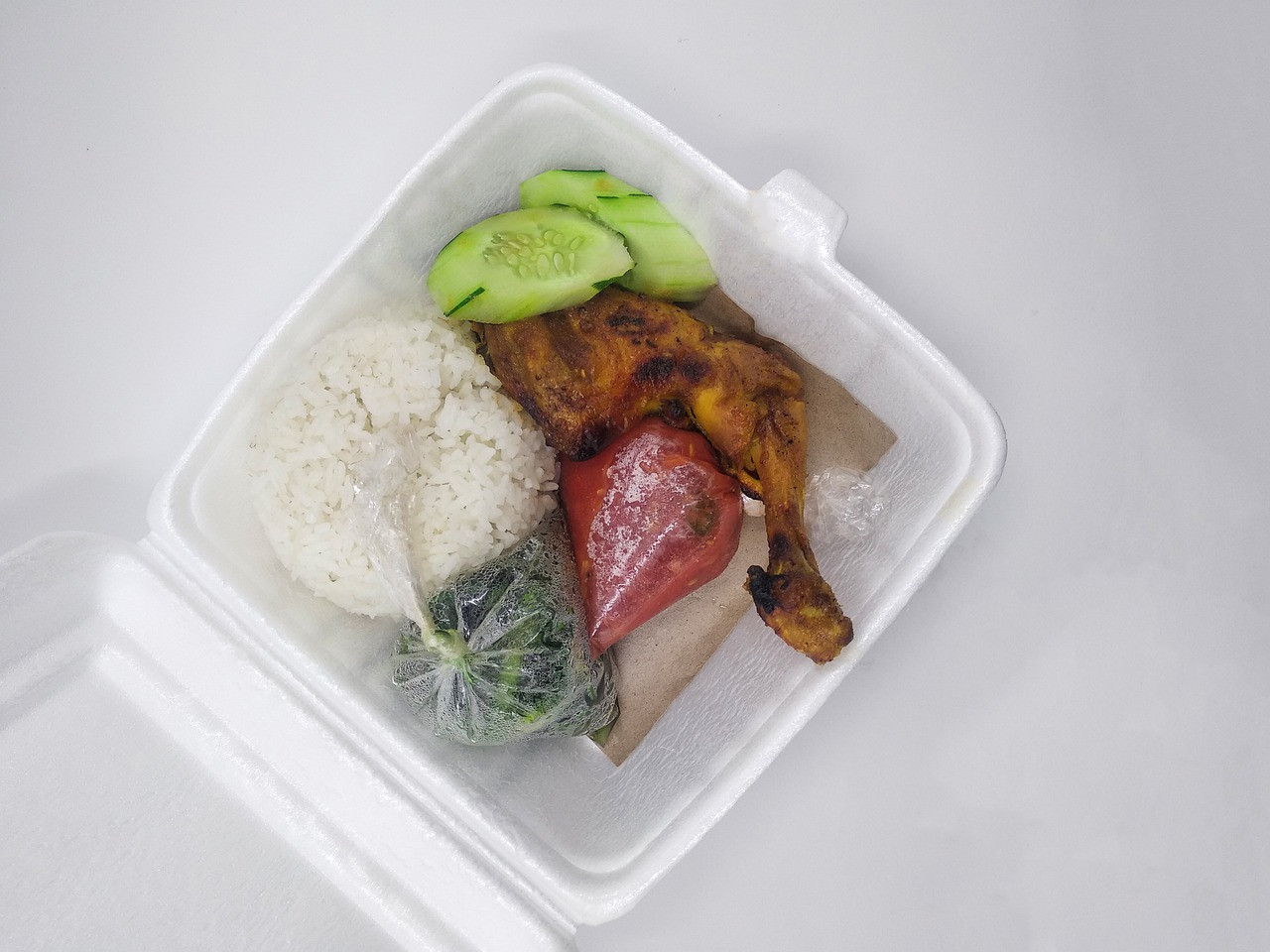Penggunaan wadah makanan styrofoam kini marak digunakan. Selain praktis, kemasan styrofoam juga cukup ekonomis untuk penggunaan sehari-hari. Namun ada sejumlah pendapat yang mengatakan bahwa penggunaan styrofoam berisiko menyebabkan kanker dan berbagai penyakit berbahaya lainnya. Benarkah demikian?
Mengapa styrofoam dianggap berbahaya?
Istilah styrofoam sebenarnya adalah merek dagang untuk bahan yang terbuat dari busa lembaran polystyrene. Merek ini kemudian dikenal luas sehingga masyarakat menyebut bahan makanan dengan bahan tersebut sebagai styrofoam.
Penggunaan styrofoam memang murah dan praktis, namun bahan pembuatan styrofoam ini kerap menjadi sorotan karena dapat menyebabkan penyakit kanker. Styrofoam terbuat dari senyawa yang dapat memicu kanker yaitu benzene dan styrene. Benzene termasuk senyawa karsinogenik yang dapat menyebabkan timbulnya kanker, sedangkan styrene diduga dapat menyebabkan kerusakan sel dan gangguan kesehatan yang serius pada sistem endokrin dan sistem reproduksi.
Selain bahan baku yang berbahaya, ada beberapa cara penggunaan styrofoam yang dianggap dapat berisiko menyebabkan kontaminasi zat kimia berbahaya ke dalam tubuh, yaitu:
1. Ketika digunakan untuk wadah makanan panas
Suhu tinggi dapat menyebabkan zat styrene berpindah ke makanan. Untuk itu, sebaiknya hindari menggunakan styrofoaam sebagai tempat makanan yang memiliki suhu panas. Selain itu jangan memanaskan makanan dengan microwave menggunakan wadah styrofoam.
2. Hindari menyimpan makanan dalam waktu lama
Ketika Anda menerima makanan yang dikemas dalam wadah styrofoam, segera pindahkan makanan tersebut ke dalam wadah lain. Menyimpan makanan di dalam styrofoam terlalu lama juga berisiko bagi kesehatan.
3. Hindari menyimpan makanan berlemak di wadah styrofoam
Jenis makanan yang disimpan di dalam wadah styrofoam juga dapat memengaruhi risiko kontaminasi styrene pada makanan. Ada beberapa anggapan bahwa makanan berlemak, berminyak dan beralkohol dapat meningkatkan kontaminasi stiren ke makanan. Meskipun demikian, belum ada penelitian yang membuktikan mekanisme tersebut. Namun para ahli menyarankan untuk mengurangi penggunaan styrofoam sebagai wadah makanan berlemak.
Tips aman penggunaan styrofoam sebagai tempat penyimpanan makanan
Meskipun memiliki potensi bahaya bagi kesehatan, namun menurut Food and Drug Administration (FDA) styrofoam boleh digunakan untuk kemasan makanan, asal digunakan hanya dalam sekali pakai. Menurut WHO, penggunaan styrofoam tidak berbahaya karena hanya memiliki kandungan styrene sekitar 0,05 ppm sedangkan batas bahaya kandungan styrene adalah 5000 ppm. Demikian juga menurut Badan Pengawasan Obat dan Makanan RI tahun 2009, styrofoam aman digunakan untuk wadah makanan.
Meskipun aman, namun penggunaan styrofoam harus tetap diawasi sesuai aturan penggunaan yaitu:
1. Tidak menggunakan styrofoam untuk memanaskan makanan dalam microwave
2. Tidak menggunakan styrofoam yang rusak untuk mewadahi makanan berlemak atau berminyak terutama dalam keadaan panas
3. Hindari penggunaan styrofoam untuk pemakaian berulang. Styrofoam hanya untuk satu kali pakai
4. Saat meletakkan makanan di atas styrofoam, beri alas berupa plastik atau kertas agar makanan tidak bersentuhan langsung dengan styrofoam
Writer: Ratih
Edited by: dr. Anita Larasati Priyono
Last Updated: 29-July-2021
Sumber:
- WHO. Exposure to Benzene: A Major Public Health Concern. 2010. https://www.who.int/ipcs/features/benzene.pdf
- Raman R, Marengo K. Can You Microwave Styrofoam, and Should You? Healthline. 2020 January. https://www.healthline.com/nutrition/can-you-microwave-styrofoam
- American Chemistry Council. FDA: Safety of Polystyrene Foodservice Packaging. https://www.plasticfoodservicefacts.com/foodservice-safety/fda-safety-of-polystyrene-foodservice-products/
- BPOM RI. Kemasan Makanan Styrofoam. KH.00.02.1.55.2888. 2009 Juli. https://www.pom.go.id/new/view/more/pers/57/Keterangan-pers-tentang-kemasan-makanan-styrofom.html
- dr Anita Larasati Priyono
WHO. Expose to Benzene: A Major Public Health Concern. 2010. https://www.who.int/ipcs/features/benzene.pdf
Raman R, Marengo K. Can You Microwave Styrofoam, and Should You? Healthline, January 2020. https://www.healthline.com/nutrition/can-you-microwave-styrofoam
American Chemistry Council. FDA: Safety of Polystyrene Foodservice Packaging. https://www.plasticfoodservicefacts.com/foodservice-safety/fda-safety-of-polystyrene-foodservice-products/
BPOM RI. Styrofoam Food Packaging, KH.00.02.1.55.2888, July 2009 July. https://www.pom.go.id/new/view/more/pers/57/Keterangan-pers-tentang-kemasan-makanan-styrofom.html







